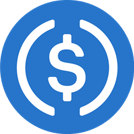NetworkNewsWire Editorial Coverage: The world’s first exchange-traded fund (“ETF”) was created in Canada in 1990, with the first U.S.-based ETF following suit a few years later. In those days, these novel investment alternatives were primarily reserved for institutional investors hoping to capitalize on sophisticated trading strategies.
Today, ETFs claim a dominant position in the portfolios of millions of investors attracted to diversification and convenience. Research by brokerage firm Charles Schwab suggests that more than nine in 10 millennials consider ETFs “a necessary part” of their investment strategies. The same survey shows that more than one in three respondents have changed their entire portfolios over to ETFs.
“Within a decade, we’ve seen ETFs grow to the point where investors now see them as a foundational investment vehicle,” Heather Fischer, vice president of ETF and mutual fund platforms at Schwab, noted in a news release. “While this sentiment is particularly pronounced among millennial investors, it is reflected strongly across generations and genders.”
What are ETFs?
Thoroughly researching any company in which you plan to invest is a great idea. Combing through filings and studying industry trends are tried-and-true ways of predicting the upside of an investment target. But we’re not all full-time investors capable of sufficient due diligence. As Investopedia notes, “[ETFs] have become a popular choice among investors looking to broaden the diversity of their portfolios without increasing the time and effort they have to spend managing and allocating their investments.”
To put it simply, an ETF is a basket of securities that is traded on a major exchange, such as the New York Stock Exchange or Nasdaq. Much like a mutual fund, ETFs can contain tens, hundreds or even thousands of stocks or bonds, but ETFs can also be quickly and conveniently traded through most online brokers – just like stocks. Because of their indexed nature, ETFs tend to be more cost-efficient than actively managed mutual funds while still facilitating the diversified approach to trading that many investors prefer.
Choosing an ETF
The ETF market is vast, and it features a near limitless selection of offerings for prospective investors. Perhaps you’re interested in dipping a toe into a hot sector such as blockchain or wireless infrastructure. Maybe you’d prefer a geographically specific fund focused on the fledgling cannabis industry in Canada. Regardless of your preference, there is a huge variety of ETFs from which to choose, and more are being introduced every day.
A few things to consider before choosing an ETF include:
- Underlying Index: A great thing about ETFs is that they typically disclose their holdings on a daily basis. Check this list to ensure that the fund’s asset allocation matches your investment strategy. As ETF.com notes, you should pay particular interest to how the stocks or bonds that make up the ETF are weighted. Some indexes weight their holdings equally, while others favor one or two big names. This choice can have a major impact on the level of risk associated with a particular ETF.
- Liquidity: Because of the nature of ETFs, liquidity can vary greatly from one fund to the next. Look into the level of assets held by an ETF, and set a minimum threshold. An ETF with assets below a threshold of $10 million, for example, may have limited investor interest and, as a result, poor liquidity. Trading volume is an excellent indicator of liquidity, and a tight bid-ask spread is key to maximizing returns when the time comes to exit the ETF.
- Tracking Difference: Managing ETFs isn’t free, so it’s important to make sure that the fund on your radar is reasonably priced. The expense ratio is a good place to start, but the fund’s tracking difference provides a more accurate representation of how the ETF is performing in relation to a particular index. As ETF.com states, “If an index is up 10.25 percent, a fund should be up 10.25 percent too. But that’s rarely the case.” Expenses such as annual fees and transaction costs can eat into your returns, so remember to do your diligence and evaluate the ETF manager before you decide to invest.
A Case Study
Armed with a better grasp on the fundamentals of ETFs, let’s take a closer look at one example to see how it stacks up with the key considerations outlined above.
The technology sector was recently highlighted as one of ‘9 Sectors That Investors Should Watch in 2019’ by U.S. News, and many high-profile investors agree. Despite largely avoiding technology stocks throughout his investing career, billionaire Warren Buffett noted during the 2018 Berkshire Hathaway meeting that the international conglomerate had “erred by not buying Alphabet, parent of Google,” as reported by Money. Buffett has likewise been investing in Apple since early 2016, and, today, his Apple stake represents his “single largest holding—by a factor of two.”
Invesco QQQ (NASDAQ: QQQ) is a prime example of an ETF that gives its investors significant exposure to the potential upside presented by the technology sector while remaining diversified. The fund includes 100 of the largest domestic and international non-financial companies listed on the Nasdaq Stock Market based on market capitalization. QQQ is rebalanced quarterly, and constituents are re-evaluated annually to ensure they make the cut, with the largest share of assets being devoted to the biggest stocks within the Nasdaq-100 Index. Currently, roughly 42 percent of the fund is invested into five tech giants: Microsoft Corp. (NASDAQ: MSFT), Apple Inc. (NASDAQ: AAPL), Amazon.com Inc. (NASDAQ: AMZN), Facebook (NASDAQ: FB) and Alphabet Inc. (NASDAQ: GOOGL) (NASDAQ: GOOG).
Underlying Index
QQQ is a popular choice for those interested in the technology sector, as it presents a relatively safe way to find growth. While its focus on the Nasdaq means that some of the largest tech companies – IBM, Alibaba Group, AT&T, etc. – are excluded, the inclusion of less volatile, non-tech firms provides a more balanced investment approach that still reflects the upside of the market as a whole. Since 2010, QQQ and the Nasdaq-100 Index have outperformed the wider Nasdaq Composite Index by more than 35 percent and the Russell 3000 Index by more than 65 percent.
Because the weighting of shares in QQQ are rebalanced quarterly, the ETF is also able to minimize the effects of major swings in particular securities.
In February 2018, Apple shares made up 11.25 percent of QQQ holdings, but Apple’s price per share (“PPS”) recorded a strong downward trend to close out the year. From a 52-week high of $233.47 in early October, Apple’s shares fell to a 2018 low of $146.83 in late December.
Likewise, QQQ’s PPS fell from a 52-week high of $186.17 in early October to a 52-week low of $143.46 in late December. However, following its quarterly rebalance, which increased holdings in Microsoft and decreased holdings in Apple, QQQ has recorded growth of 10.4 percent year-to-date, outperforming Apple shares over the same period by nearly three percent.
While this short-term trend doesn’t reflect a hard-and-fast rule, it does highlight the potential upside of the diversification strategies facilitated by ETFs. By offering a fluid sampling of some of the technology sector’s most prominent companies, QQQ provides exposure to technology while limiting the effect of significant swings in the PPS of individual stocks.
Liquidity
As mentioned previously, the liquidity of ETFs can vary wildly based on their holdings. With QQQ being comprised of 100 of the largest domestic and international non-financial companies listed on the Nasdaq, it is recognized as “one of the best established and most traded ETFs in the world.” QQQ is much more concentrated in its top holdings than many large-cap benchmarks, but its huge name recognition and the reputability of the underlying Nasdaq-100 Index position it as an extremely liquid fund.
As noted in an article from The Street in mid-2018, “This ETF is one of the best as per liquidity and its tight bid/ask markets.”
Tracking Difference
QQQ offers a total expense ratio of 0.20 percent, meaning that the fund will cost investors $2 in annual fees for every $1,000 invested. According to the Wall Street Journal, the average ETF carries an expense ratio of 0.44 percent, by comparison. In other words, the fee structure of QQQ is attractive for those looking to invest in an ETF.
Comparing the performance of QQQ to the Nasdaq-100 Index paints a similarly inviting picture. If, for example, an investor put $10,000 into QQQ on December 31, 2008, and held the shares for 10 full years, the investment would have been worth $57,130 at the end of 2018. This total comes in at just 2.15 percent less than the growth of the Nasdaq-100 Index over the same period, according to Invesco data.
Are ETFs Right for You?
To sum things up, ETFs offer a unique pathway for investors looking to gain exposure to a certain sector or industry without greatly increasing the time spent researching individual companies. Their fee structures are typically extremely competitive, particularly when compared with actively-managed mutual funds, and they can even provide serious tax benefits related to capital gains.
If you don’t have any ETFs in your portfolio, now could be the time to take a closer look at this time-tested investment vehicle. As Martin Small, head of U.S. and Canada iShares at BlackRock, noted in a 2018 open letter, “ETFs aren’t just having a moment. They’re creating a movement.”
About NetworkNewsWire
NetworkNewsWire (NNW) is a financial news and content distribution company that provides (1) access to a network of wire services via NetworkWire to reach all target markets, industries and demographics in the most effective manner possible, (2) article and editorial syndication to 5,000+ news outlets (3), enhanced press release services to ensure maximum impact, (4) social media distribution via the Investor Brand Network (IBN) to nearly 2 million followers, (5) a full array of corporate communications solutions, and (6) a total news coverage solution with NNW Prime. As a multifaceted organization with an extensive team of contributing journalists and writers, NNW is uniquely positioned to best serve private and public companies that desire to reach a wide audience of investors, consumers, journalists and the general public. By cutting through the overload of information in today’s market, NNW brings its clients unparalleled visibility, recognition and brand awareness. NNW is where news, content and information converge.
For more information, please visit https://www.networknewswire.com
NetworkNewsWire (NNW)
New York, New York
www.networknewswire.com
212.418.1217 Office
Editor@NetworkNewsWire.com
Please see full terms of use and disclaimers on the NetworkNewsWire website applicable to all content provided by NNW, wherever published or re-published: http://NNW.fm/Disclaimer
DISCLAIMER: NetworkNewsWire (NNW) is the source of the Article and content set forth above. References to any issuer other than the profiled issuer are intended solely to identify industry participants and do not constitute an endorsement of any issuer and do not constitute a comparison to the profiled issuer. The commentary, views and opinions expressed in this release by NNW are solely those of NNW. Readers of this Article and content agree that they cannot and will not seek to hold liable NNW for any investment decisions by their readers or subscribers. NNW is a news dissemination and financial marketing solutions provider and are NOT registered broker-dealers/analysts/investment advisers, hold no investment licenses and may NOT sell, offer to sell or offer to buy any security.
The Article and content related to the profiled company represent the personal and subjective views of the Author, and are subject to change at any time without notice. The information provided in the Article and the content has been obtained from sources which the Author believes to be reliable. However, the Author has not independently verified or otherwise investigated all such information. None of the Author, NNW, or any of their respective affiliates, guarantee the accuracy or completeness of any such information. This Article and content are not, and should not be regarded as investment advice or as a recommendation regarding any particular security or course of action; readers are strongly urged to speak with their own investment advisor and review all of the profiled issuer’s filings made with the Securities and Exchange Commission before making any investment decisions and should understand the risks associated with an investment in the profiled issuer’s securities, including, but not limited to, the complete loss of your investment.
NNW HOLDS NO SHARES OF ANY COMPANY NAMED IN THIS RELEASE.
This release contains “forward-looking statements” within the meaning of Section 27A of the Securities Act of 1933, as amended, and Section 21E the Securities Exchange Act of 1934, as amended and such forward-looking statements are made pursuant to the safe harbor provisions of the Private Securities Litigation Reform Act of 1995. “Forward-looking statements” describe future expectations, plans, results, or strategies and are generally preceded by words such as “may”, “future”, “plan” or “planned”, “will” or “should”, “expected,” “anticipates”, “draft”, “eventually” or “projected”. You are cautioned that such statements are subject to a multitude of risks and uncertainties that could cause future circumstances, events, or results to differ materially from those projected in the forward-looking statements, including the risks that actual results may differ materially from those projected in the forward-looking statements as a result of various factors, and other risks identified in a company’s annual report on Form 10-K or 10-KSB and other filings made by such company with the Securities and Exchange Commission. You should consider these factors in evaluating the forward-looking statements included herein, and not place undue reliance on such statements. The forward-looking statements in this release are made as of the date hereof and NNW undertakes no obligation to update such statements.







